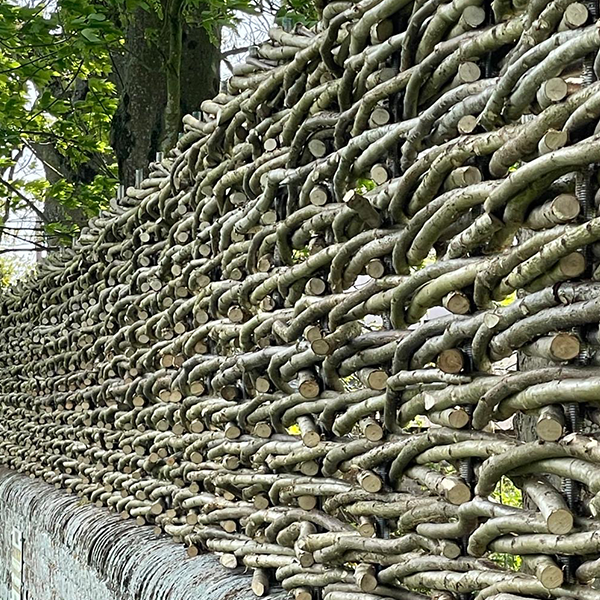Woven Hazel
The hazel tree has been managed by coppicing for millennia. This traditional management technique produces long, straight rods and poles that are used extensively in rural crafts. Thatching, hedgelaying, basketry, charcoal burning all rely still on managed hazel woodland. Using traditional techniques, Paul is able to weave continuous hazel fencing and panels, as well as bespoke hazel structures. An attractive, traditional boundary, the hazel is woven on site after harvesting from sustainably managed ancient woodland. The management of these woods increases biodiversity and benefits the countryside greatly.
HURDLES
Before the mass production of metal hurdles & fencing, agriculture relied on both hedgerows and woven wooden hurdles.
Crafted from hazel, willow or chestnut, they provided a barrier for the containment of sheep and other livestock. Although they have become largely redundant for this process, they still have great appeal for use in a garden environment. Working with hazel and using the traditional method of splitting each rod, framed hazel hurdles can be built to any dimensions to provide an attractive screen of backdrop to beds and borders. Sourced sustainably from ancient woodland, the periodic harvest of hazel rods, referred to as coppicing, increases biodiversity in our native woodlands.
BESPOKE STRUCTURES
Working with either split or round hazel rods and incorporating traditional methods, hazel rods can be woven into a variety of shapes.
Hazel is a versatile and malleable material which lends itself well to rustic garden projects, creating a sense of woodland heritage and tradition into modern garden designs.
Contact
Whether you’re looking to restore a hedge, learn the craft, or take part in a workshop surrounded by nature, Paul would love to hear from you.
For all enquiries, bookings, or course information, please use the contact form.









